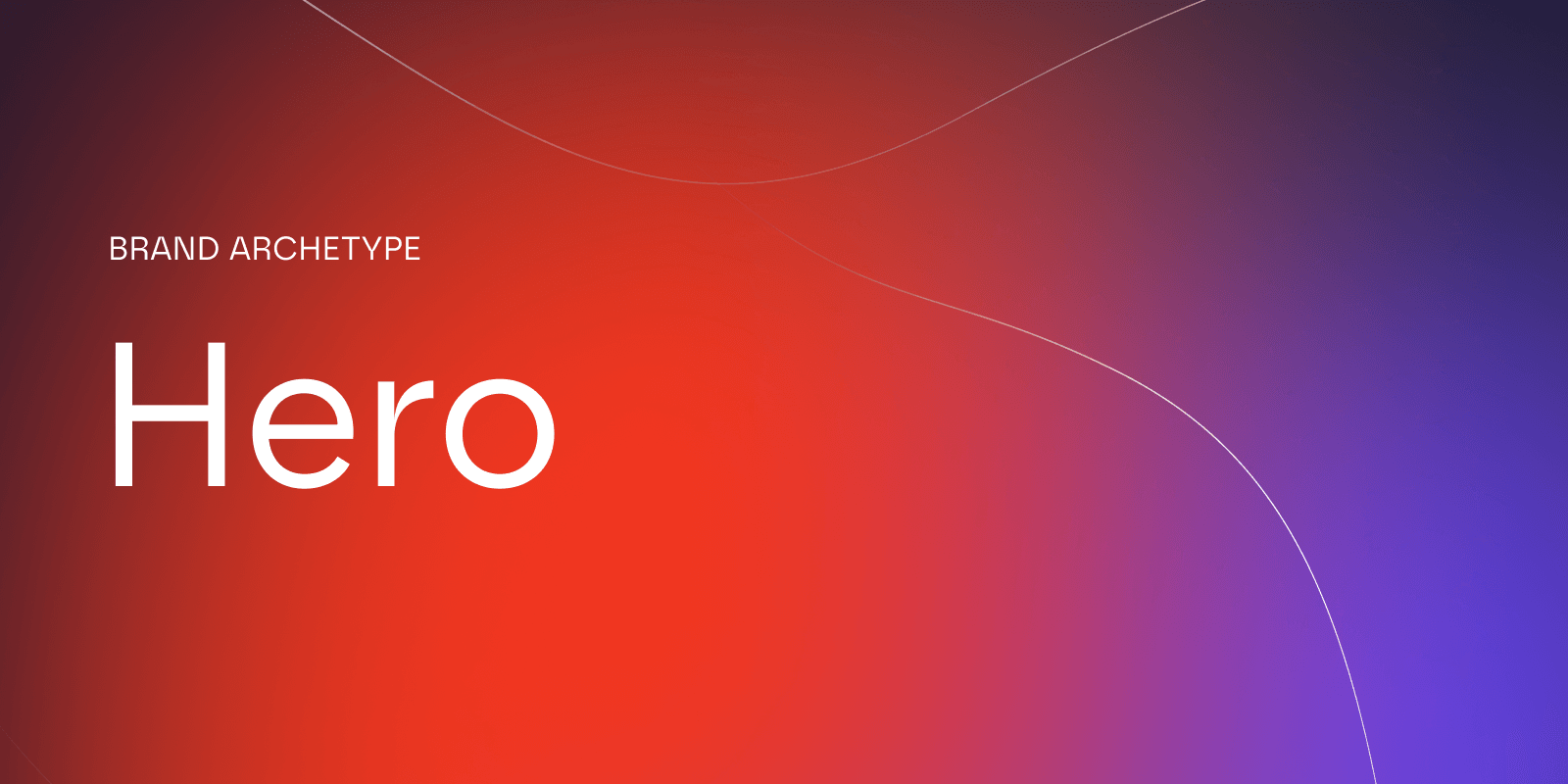In the tech industry's crowded marketplace, standing out requires more than just “standout” features or competitive pricing. The most memorable brands don't just solve problems; they inspire entire industries to think bigger. Their secret? A brand strategy centered around creating a Hero brand archetype.
Hero brands position themselves as protagonists in their industry’s story. Unlike facilitator brands, which guide customers quietly toward solutions, Hero brands lead by example, set new standards, and invite others to follow their vision.
TL;DR?
Hero brands lead with vision, resilience, and confidence. For tech startups, becoming a Hero brand means moving beyond product features and pricing to position themselves as industry leaders driving progress. The foundation is a clear brand strategy for startups—defining mission, values, and identity—so the Hero archetype can guide consistent branding, communication, and customer experience. When executed authentically, Hero branding helps startups build trust, inspire loyalty, and set new standards in their sector.
This guide explores how the Hero brand archetype works, why it matters in tech, and how to identify if your startup has the potential to become one.
What is a Hero brand?
What makes a Hero brand different?
Hero brand 1: Strava
Hero brand 2: Stripe
Hero brand 3: Magneo
Hero brand 4: Apple
Hero brand 5: IqanosIs my startup a Hero brand?
How does my startup become a Hero brand?
What is a Hero brand?
The hero brand archetype emerged from Carl Jung's psychological research on universal patterns of human behavior. Carl Jung defined archetypes as universal patterns rooted in the collective unconscious, reflected in myths, stories, and cultural symbols that express fundamental human motivations and desires. Among them, the Hero archetype embodies courage, mastery, and the drive to prove one’s worth by overcoming obstacles, representing humanity’s quest to leave a mark and achieve greatness.
In branding, the Hero draws on this timeless narrative by positioning a company as strong, reliable, and inspiring; helping customers confront challenges and strive for progress in ways that mirror the classic hero’s journey.
The most successful hero brands in tech combine three essential characteristics:
A bold visual identity communicates strength, progress, and reliability. This includes color schemes that convey confidence, typography that suggests forward momentum, and imagery that emphasizes achievement and growth.
Compelling storytelling frames every interaction as part of a larger journey. Hero brands don't just announce product updates, they share stories of how these improvements help customers overcome challenges and achieve their goals.
Emotional positioning connects product benefits to personal and professional aspirations. Instead of focusing solely on technical specifications, hero brands emphasize how their solutions enable users to accomplish more, reach new heights, or solve previously impossible problems.
What makes a Hero brand different?
The hero brand mindset
Hero brands embody confidence, vision, and unwavering commitment to their mission. They don't just respond to market needs; they create new markets and define industry standards. This positioning requires three core elements:
Bold leadership & inspiration: Hero brands make decisive moves that others hesitate to make. They launch revolutionary products, take public stances on important issues, and consistently push boundaries. These companies don't just promise solutions; they promise transformation.
Clear vision & resilience: These brands communicate a compelling future state and work relentlessly toward achieving it. Their vision extends beyond quarterly profits to long-term industry transformation.
Authentic confidence & determination: Hero brands project natural authority without arrogance. They earn respect through consistent performance and innovative thinking, not through aggressive marketing tactics.
How hero brands differ from facilitators
Hero brands don't just sell products; they inspire progress, overcome challenges, and empower their users to achieve greatness. For tech startups navigating crowded markets in SaaS, fintech, cleantech, and deeptech, adopting the hero archetype can be the difference between blending in and leading the charge.
Most tech companies position themselves as facilitators or guides, helping customers navigate challenges and reach their goals. This approach works well for service-oriented businesses but limits growth potential in competitive markets.
Hero brands flip this dynamic. Instead of saying "We'll help you succeed," they demonstrate success and invite others to join their journey. This subtle shift creates powerful differentiation:
- Facilitator brands: "Let us guide you to success"
- Hero brands: "Follow our lead toward transformation"
What are examples of Hero brands in tech?
Examining successful hero brands reveals common patterns that tech startups can adapt for their own growth strategies.
Strava: Inspiring athletes to push harder
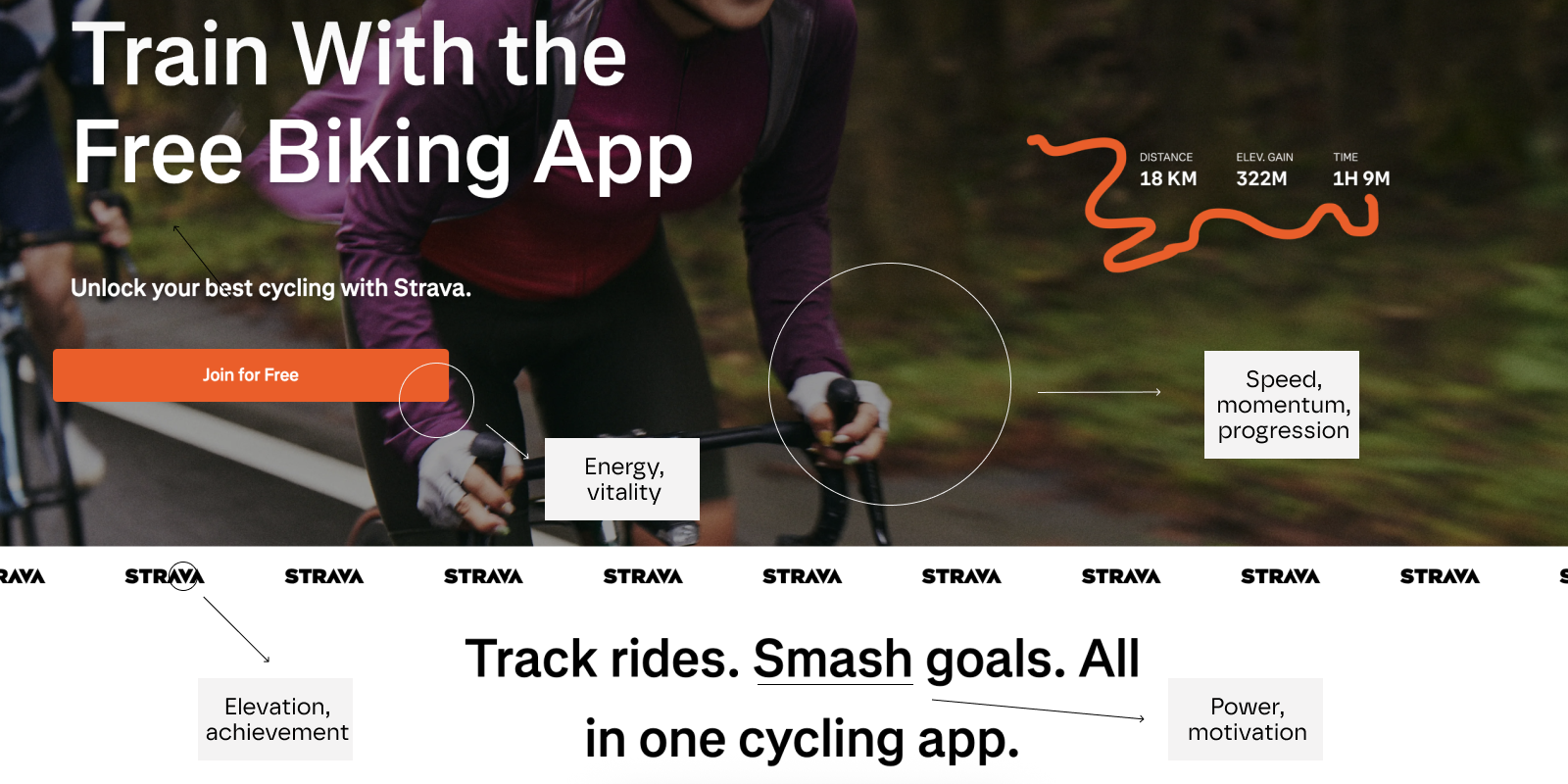
Strava positioned itself as more than a fitness tracker—it became the social network for athletes. By motivating users to document their training, compete in challenges, and celebrate achievements, the SportsTech brand empowers people to go further and improve their performance. Its focus on resilience and progress reflects the Hero archetype, turning everyday workouts into victories worth sharing.
How does Strava’s branding reflect the Hero archetype?
- Logo: The sharp, upward-pointing “A” in the logotype resembles an arrow or peak, symbolizing progress, elevation, and achievement: classic Hero cues.
- Colors: Strava’s signature orange communicates energy, vitality, and urgency. It evokes movement and determination,
- Typography: The clean, geometric sans-serif typeface projects strength, clarity, and modernity. Its solid forms reinforce dependability and resilience.
- Tone of voice: Messaging is motivational and action-oriented. Phrases like “If it’s not on Strava, it didn’t happen” embody confidence and challenge users to strive for more.
Stripe: Powering the internet economy
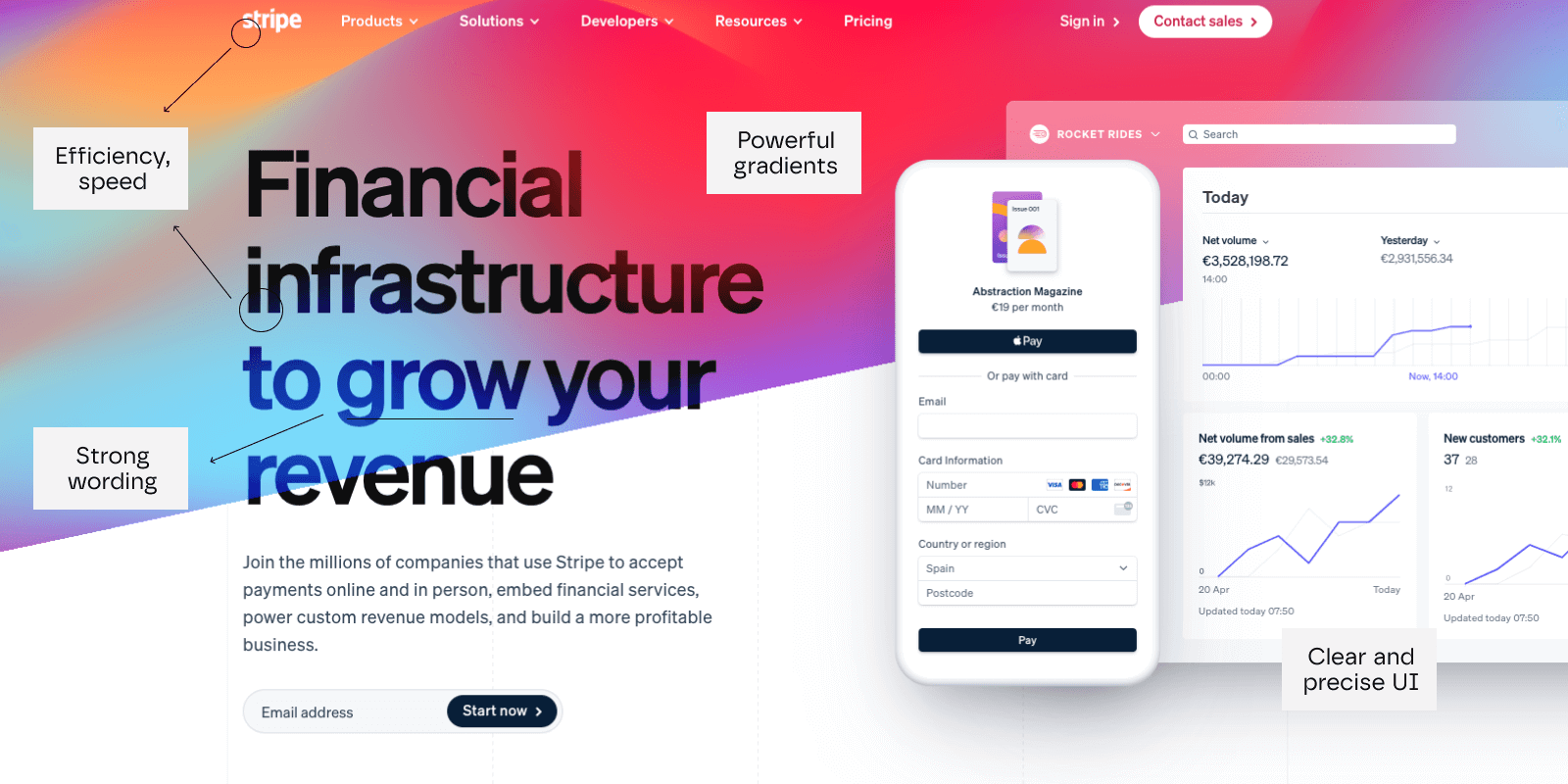
Stripe achieved hero brand status by making online payments simple for developers and startups. While competitors offered complex systems, the Fintech built easy-to-integrate APIs that removed friction for entrepreneurs. By empowering businesses of all sizes to transact online, Stripe became the backbone of digital commerce and a trusted enabler of growth.
How does Stripe’s branding reflect the Hero archetype?
- Logo and typography: The lowercase, geometric logotype is simple, modern, and confident, reflecting straightforward dependability. This small spacing and condensed letters give off a sense of efficiency and speed.
- Colors: Stripe’s main color is a deep trustworthy blue. Paired with powerful gradients and clean UI visuals, the colors balance authority with energy.
- Design system: Its branding is minimalist and functional, underlining clarity and precision; traits aligned with the Hero’s directness.
- Tone of voice: The Fintech’s TOV centers around “grow”, “profitable”, and other positive wordings, characteristic of a Hero brand.
Magneo: Unlocking athletes’ potential with technology
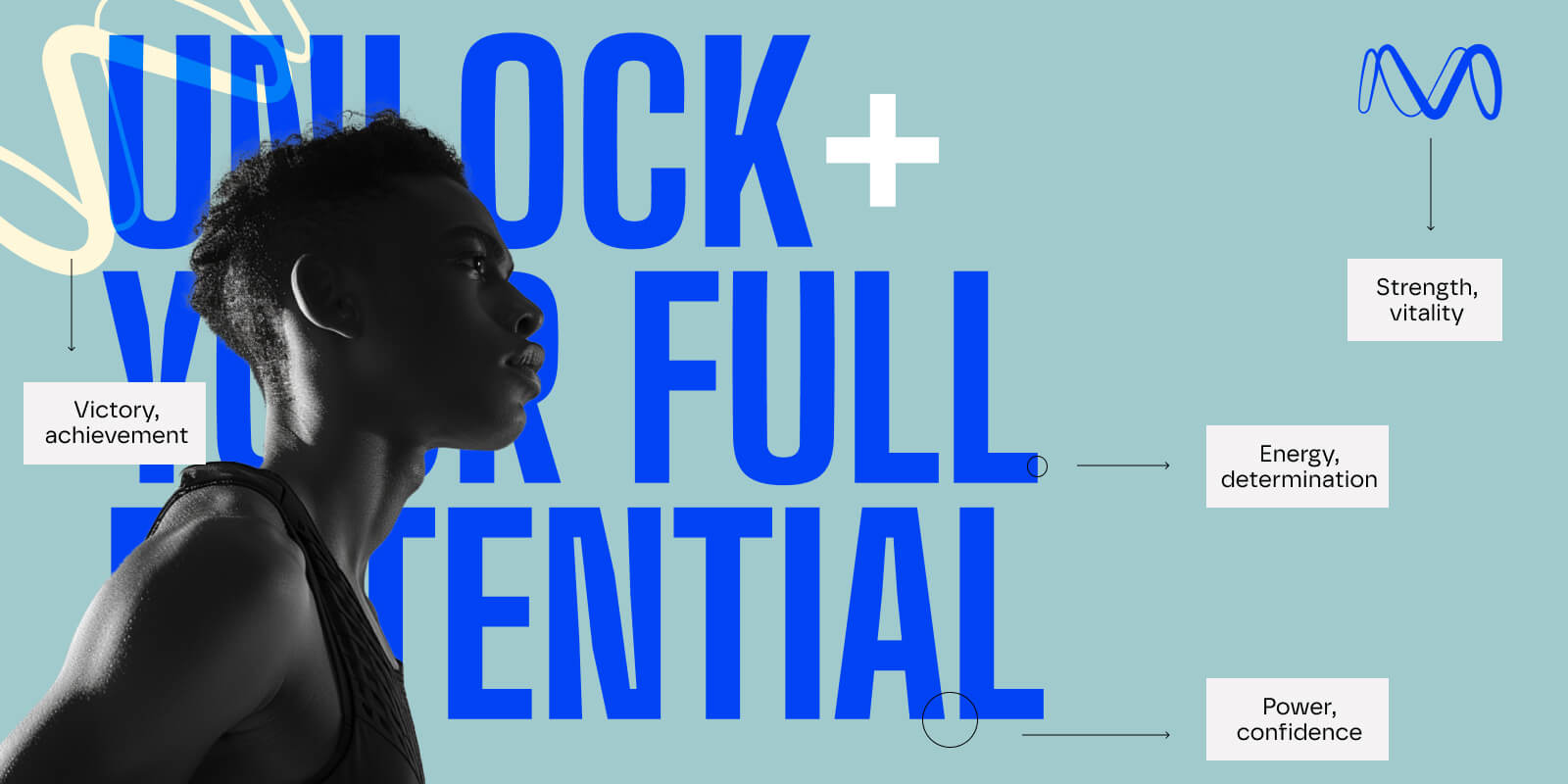
Magneo is the visual translation of harder, better, faster, stronger. The SportsTech brand aims to empower users to train harder and push their limits. The striking brand identity and website communicates their bold value position, enabling limitless power and unstoppable progress.
How does Magneo’s branding reflect the Hero archetype?
- Logo: The isotype echoes a heartbeat, cardiogram, and crown: symbols of strength, vitality, and achievement.
- Design language: Deep blue, turquoise, and gold convey energy, determination, and a premium sense of victory. Bold, tall sans-serif typeface projects power and confidence.
- Imagery: Black-and-white photography captures athletes in motion, symbolizing resilience, strength, and unstoppable progress.
- Narrative: Messaging centers on “unlocking potential” and “limitless progress,” classic Hero language of striving toward greatness.
Apple: Empowering creativity and innovation
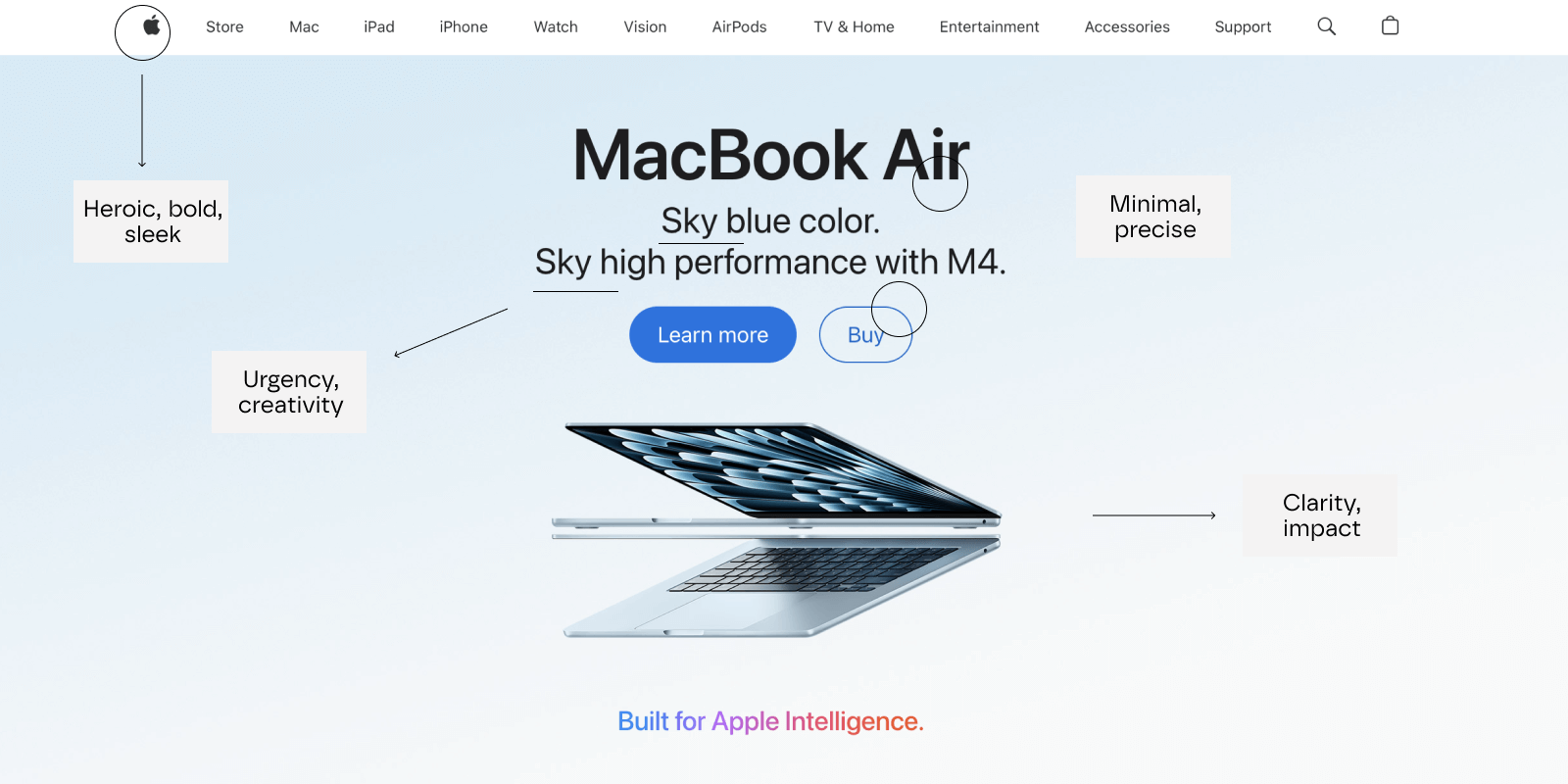
Apple positioned itself as a hero brand by making advanced technology accessible, intuitive, and inspiring. From the Macintosh’s “1984” campaign to the iPhone, Apple didn’t just sell devices; it empowered individuals to think differently and create. Its consistent commitment to design, usability, and innovation made Apple a cultural icon and a global benchmark for user-centered technology.
How does Apple’s branding reflect the Hero archetype?
- Logo and isotype: Apple doesn’t even need to put it wordmark next to it. The iconic apple isotype speaks to millions of users. Black on white background, it is bold, heroic, and sleek.
- Design language: Minimal, precise, and strong. It reflects confidence and resilience. The typography is clean and techy.
- Advertising style: Stripped-back visuals with strong headlines keep the focus on clarity and impact.
- Tone of voice: Especially for product descriptions, Apple uses short sentences and ellipses. This communicates speed and boldness, e.g.: “A work of smart.” Repetition of the first word evokes a sense of urgency.
Iqanos: Soft tones, strong visual language
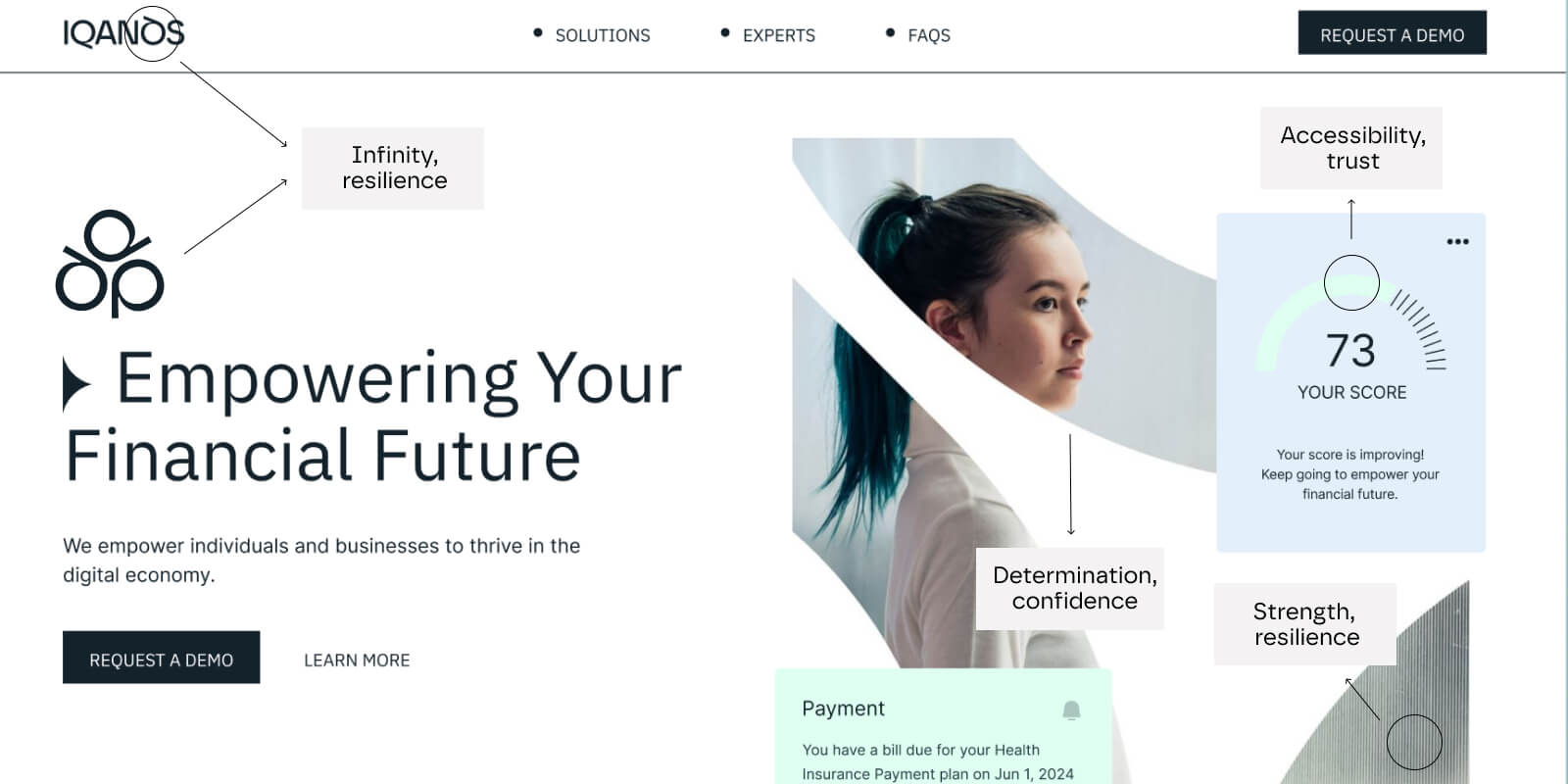
Iqanos was designed to position Fintech, Insurtech, and B2B SaaS startups as reliable leaders in their industries. Its brand identity emphasizes strength, precision, and trust, embodying the Hero archetype by projecting confidence and setting the path for growth.
How does Iqanos' branding reflect the Hero archetype?
- Logo: The circular shapes of the isotype reference both infinity and tree rings, symbolizing wisdom, continuity, and resilience. This design underlines Iqanos’ role as a trustworthy and enduring partner.
- Colors: Pastel tones create a smooth, approachable experience while maintaining visual authority. They balance trustworthiness with accessibility, signaling stability without rigidity.
- Typography: Strong, precise letterforms communicate reliability and structure, reinforcing the Hero’s clarity and confidence.
- Imagery: Images with a graphit- or wood-like look and feel act as robust and resitant backgrounds, indicating strenght and resiliance. Photography captures people with strict and confident expressions, communicating determination and confidence.
Note that most of the brands do not match solely one archetype.
Many features of Strava (mapping routes, adventure rides) reflect curiosity and discovery, also the way they are presented: this aligns with the archetype of The Explorer. Stripe shares characteristics with The Magician, transforming something complex (global payment infrastructure) into something effortless. Magneo incorporates the determination and rebellion of The Outlaw. Apple communicates around imagination, artistry, and originality, which are classic Creator values. Iqanos incorporates trustworthy and knowledgeable elements of The Sage.
Is my startup a Hero brand?
Not every startup should pursue hero brand positioning. This approach requires specific characteristics and market conditions to succeed effectively.
Signs your startup fits the Hero archetype
- Innovation capacity: You consistently develop solutions that advance industry capabilities rather than just matching existing options.
- Market timing: You're entering a market ready for leadership or disruption, with customers frustrated by current limitations.
- Resource commitment: You have the resources and patience to build brand recognition over time rather than seeking immediate returns.
- Emerging categories: New market segments without established leaders provide opportunities for hero brand development.
Reflective questions to assess Hero brand potential
Here's a practical checklist for founders to evaluate their hero brand potential:
- Courage and ambition: In what ways does your mission statement address larger challenges or signal meaningful change in your industry?
- Empowerment: How do your communications and campaigns present your startup as a source of strength and progress for your customers?
- Resilience and boldness: What elements of your visual identity express confidence, reliability, and a sense of forward motion?
- Trust and dependability: How do your customers describe their relationship with your brand—do they see you as a reliable partner in achieving success?
- Leadership: When industry conversations take place, how often does your team set the agenda or shape the standards others follow?
How does my startup become a Hero brand?
Follow this action plan to build a successful Hero brand.

1. Start with brand strategy fundamentals.
Define your vision, mission, and values with hero archetype principles in mind. Your vision should articulate the better future you're helping create. Your mission should emphasize the challenges you're overcoming. Your values should reflect courage, determination, and commitment to customer success. Position your startup as strong, dependable, and committed to performance even in challenging situations.
This guide helps you get started with your strategy.
2. Signal boldness and strength through visuals
Develop a visual identity that reflects empowerment and growth. This includes selecting colors that convey confidence and progress, typography that suggests forward momentum, and imagery that emphasizes achievement. Your visual identity should make customers feel stronger and more capable simply by engaging with your brand.
3. Center your story on progress
Present your company as a driver of growth, improvement, or transformation, whether personal (like Magneo) or business-focused (like Stripe). Communicate in a motivational and direct way that encourages users to move forward, achieve more, or strive for better.
4. Be mission-driven, not feature-driven
Connect your narrative to a bigger purpose such as sustainability, efficiency, or human empowerment, instead of focusing only on technical capabilities.
5. Partner with experienced branding professionals
You need experts who understand both the hero archetype and the tech industry. Building a compelling hero brand requires expertise in strategy, design, and messaging. The right tech branding agency can help translate your hero brand vision into compelling visual identity and communication systems.
Hero brands aren't just for Fortune 500 companies with massive marketing budgets. Tech startups can successfully adopt the hero archetype from their earliest stages, creating powerful emotional connections that drive customer loyalty and business growth.
Hero branding is most effective when built on a strong brand strategy. For tech startups, this archetype offers a framework to communicate leadership, inspire customers, and establish long-term competitive strength. By aligning mission and values with identity and messaging, branding for tech startups moves beyond product features to position companies as standard-setters in their industries. Partnering with an experienced tech branding agency helps ensure that the Hero narrative is authentic, strategic, and executed across every touchpoint.
Sources and further reading:
https://www.simplypsychology.org/carl-jung.html
https://www.ebaqdesign.com/blog/hero-archetype
https://visionone.co.uk/brand-archetype-quiz/the-hero-brand-archetype/
